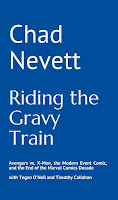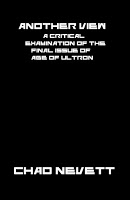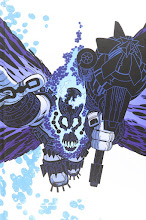While in London last week, I picked up three Human Target trades: the four-issue mini, The Final Cut graphic novel and Living in Amerika, the second collection from the 21-issue series. I already owned Strike Zones, the first collection from the ongoing (but cancelled after 21 issues) series. And, let me tell you, these books make for some pretty damn good reading.
The basic plot is that Christopher Chance is the Human Target, a man who not just impersonates but becomes others--usually people in danger and in need of someone who can react to said danger. In the process of being these people, Chance himself gets a little lost in the shuffle. Who is Christopher Chance if he spends all of his time as others? Is there a real Chance? Was there ever?
In the first story, Milligan has Chance confront this more directly when his assistant and protege faces the same problems. He has a wife and child, but he can be ANYONE but himself. The burden of living his own life is too great and he loses himself in other lives, including that of Chance. There's a wonderful scene where the fake Chance is having sex and requests not to be touched, for her to be on top so he can watch with minimal contact--something that Chance demands, but how did the faux Chance know this?
Again and again, Chance (or his protege in the first story) discover personality traits and secrets in the process of being these people, which raises the question of how much is given away by all of us everyday? How much of us is in the way we walk and talk and eat and whatever other mundane tasks we perform? Is it all there? And if it is, does mimicking those actions actually cause someone to become that other person?
Basically, these books are about what makes a person unique. Most like to believe it is something inate or even the soul, but Milligan seems to argue that it isn't. We are just the sum of our superficial activities.
The plots of the stories aren't that important. They're all very interesting and provide Chance with opportunity to examine himself, but they're secondary to the examination of humanity.
Of course, Milligan doesn't have any answers, so the same questions get posed again and again and again. Subtextually, the series remains at a standstill for the most part, but that's only because there is nowhere to go, really. Chance never advances, so how can we?
***
Next week, I'll resume my look at Jim Starlin's work at Marvel. I'm waiting on a shipment that contains the bulk of his Silver Surfer run (the remaining issues arrived this week) and the issues of Thor and The Silver Surfer from the "Blood and Thunder" crossover that linked with the two Warlock titles. But, that story is far enough down the line that there shouldn't be any problem. I will do these posts on Mondays, Wednesdays and Fridays.
On Tuesdays and Thursdays, I will do an issue-by-issue analysis of Joe Casey and Leonardo Manco's 11-issue Deathlok series from the late '90s. I finally completed my run of the book and these posts will go along with my issue-by-issue looks at other Casey-written series. And, perhaps, when I've finished this series, I will finally get to Automatic Kafka, which is a type of sequel to Deathlok (in a thematic sense).
Dead X-Men #4 annotations
3 hours ago






